Released in March 2022, the Xiaomi 12 Pro lands in our Ultra-Premium ($800 and higher) segment, and as such, it comes with a host of attractive features. Let’s see how well it did in our comprehensive array of Display tests.
Overview
Key display specifications:
- 6.73-inch LTPO AMOLED screen
- Resolution: 3200 x 1440 pixels (522 ppi)
- Aspect ratio: 20:9
- Refresh rate: up to 120 Hz
Scoring
Sub-scores and attributes included in the calculations of the global score.
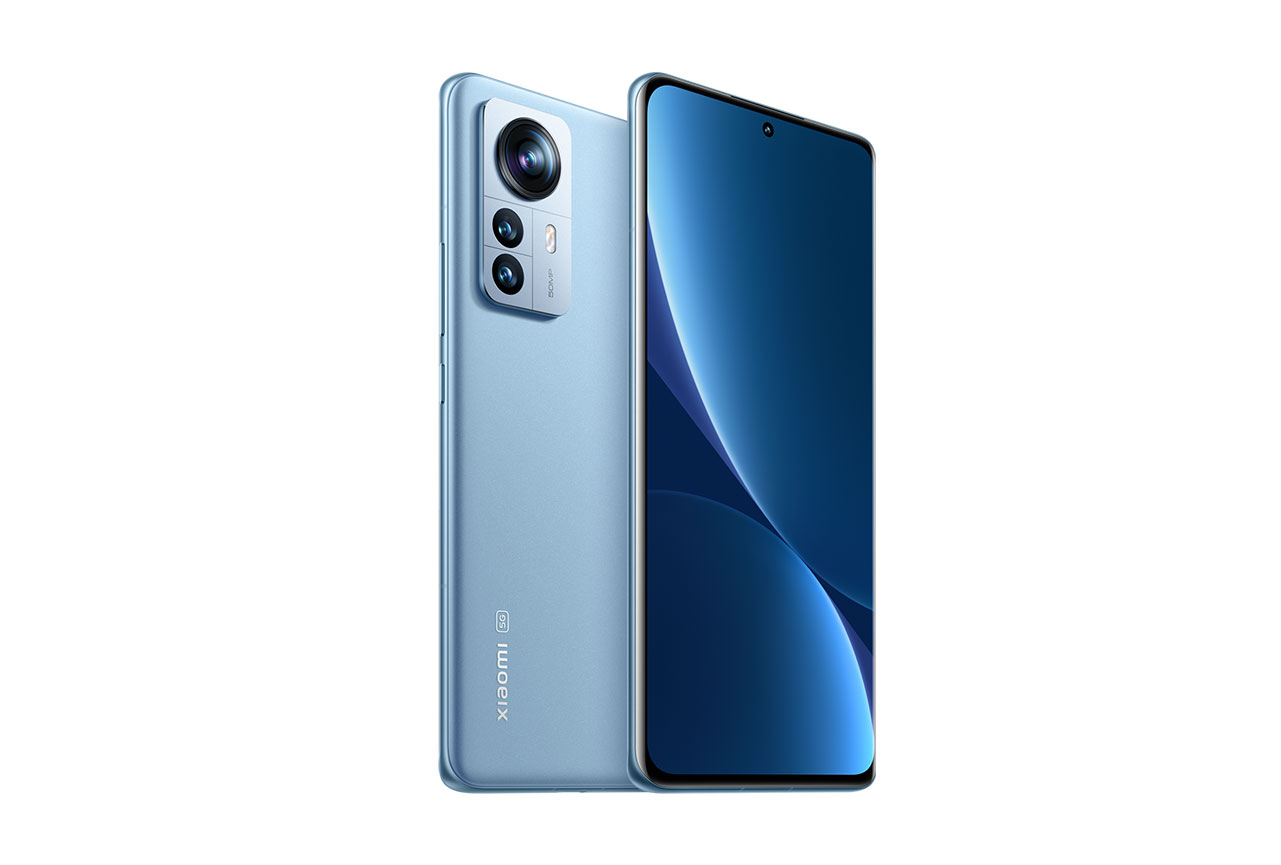 Xiaomi 12 Pro
Xiaomi 12 Pro


 132nd
132nd
 86th
86th
Pros
- Faithful color rendering indoors
- Smooth touch interactions
- Smooth light transitions outdoors
Cons
- Low brightness level for HDR10 videos
- Lack of brightness in most tested conditions
- Difficulty handling frame drops when watching videos
The Xiaomi 12 Pro provides users with smooth interactions and good indoor color rendering, but its overall performance is marred by too-low brightness at its default settings, and this is particularly true when it comes to watching HDR10 videos. It is reasonably comfortable to use as a gaming device, but visible aliasing and some problems with touch selection along the bottom and edges keep it from being ideal. It is readable outdoors, but its high brightness mode reduces color nuances.
The Xiaomi 12 Pro’s DXOMARK Display overall score is derived from its scores across the six attributes of readability, color, video, motion, touch, and artifacts. In this section, we take a closer look at these display quality sub-scores and explain what they mean for the user, and we compare the Xiaomi 12 Pro with the Xiaomi Mi 11 Ultra and with two of its rivals, the OnePlus 9 Pro and the Apple iPhone 13 Pro Max.
Test summary
About DXOMARK Display tests: For scoring and analysis in our smartphone and other display reviews, DXOMARK engineers perform a variety of objective and perceptual tests under controlled lab and real-life conditions. This article highlights the most important results of our testing. Note that we evaluate display attributes using only the device’s built-in display hardware and its still image (gallery) and video apps at their default settings. (For in-depth information about how we evaluate smartphone and other displays, check out our articles, “How DXOMARK tests display quality” and “A closer look at DXOMARK Display testing.”)
The following sections gather key elements of our exhaustive tests and analyses performed in DXOMARK laboratories. Detailed performance evaluations in the form of reports are available upon request; do not hesitate to contact us.
Readability
Xiaomi 12 Pro
164
Readability evaluates how easily and comfortably users can read still content (photos & web) on the display under different real-life conditions. DXOMARK uses its Display Bench to recreate ambient light conditions ranging from total darkness to bright sunlight. In addition to laboratory tests, perceptual analyses are also performed in real-life environments.
Brightness on the Xiaomi 12 Pro is slightly low in most lighting conditions. Indoors, several tiny steps are visible as it adjusts to falling light, but the device is smooth during transitions outdoors. Although the 12 Pro is mostly uniform in brightness, it shows some darker areas along the edges.
The comparison charts below show the Xiaomi 12 Pro’s performance vs. the competition at 0 lux (low light) and at 30,000 lux (broad daylight):
The Xiaomi 12 Pro’s brightness is slightly low when viewed in low-light conditions.
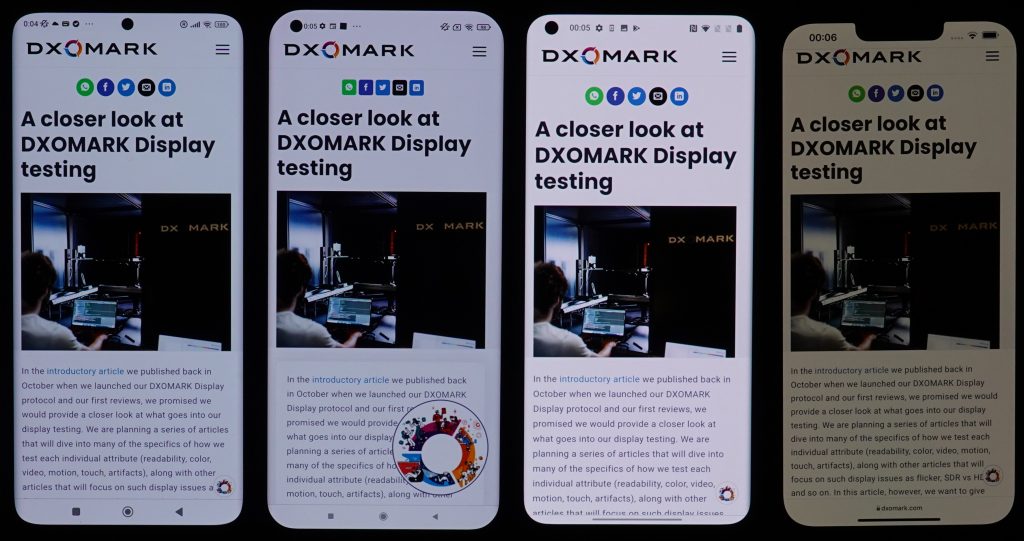
Readability in low light at night, from left to right: Xiaomi 12 Pro, Xiaomi Mi 11 Ultra, OnePlus 9 Pro, Apple iPhone 13 Pro Max
The device lacks brightness indoors.

Readability in indoor conditions, from left to right: Xiaomi 12 Pro, Xiaomi Mi 11 Ultra, OnePlus 9 Pro, Apple iPhone 13 Pro Max
In outdoor conditions, the device’s high brightness mode increases the readability, but images appear flatter.

Readability under sunlight, from left to right: Xiaomi 12 Pro, Xiaomi Mi 11 Ultra, OnePlus 9 Pro, Apple iPhone 13 Pro Max
Holding the Xiaomi 12 Pro at an angle results in a strong loss of brightness that degrades content readability.


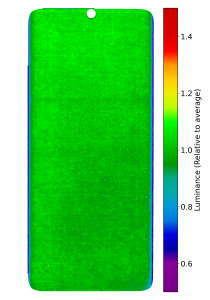
The more visible the green color is, the more uniform is the display.
Color
Xiaomi 12 Pro
165
The color attribute evaluates the capacity of the device to accurately reproduce colors. The measurements taken are for fidelity, white point color, and gamut coverage. We perform color evaluations for different lighting conditions to see how well the device can manage color in the surrounding environment. Colors are measured using a spectrophotometer in a controlled lighting environment. Perceptual analysis of color rendering is against the reference pattern displayed on a calibrated professional monitor.
The Xiaomi 12 Pro has faithful color rendering indoors, although a slight pink cast is sometimes visible.

Color rendering indoors, clockwise from top left: Xiaomi 12 Pro, Xiaomi Mi 11 Ultra, Apple iPhone 13 Pro Max, OnePlus 9 Pro
Outdoors, when viewed under sunlight, some content is altered by the sunlight adaptation. In addition, all viewed photos showed a green cast.

Color rendering under sunlight, clockwise from top left: Xiaomi 12 Pro, Xiaomi Mi 11 Ultra, Apple iPhone 13 Pro Max, OnePlus 9 Pro
The charts below show the Xiaomi 12 Pro’s measured color faithfulness at 1000 lux in both the RGB and P3 color spaces. The further the tip of an arrow is outside the circle, the more noticeable the difference between the device’s color rendering and the original source material. The 12 Pro does not automatically adapt the color rendering to the content color space, thus sRGB photos will look more saturated.


The charts below show the Xiaomi 12 Pro’s color tendencies when held at an angle. Each dot represents a measurement taken at a discrete angle and distance from the device. Dots inside the inner circle exhibit no color shift in angle; those between the inner and outer circle have shifts that only trained experts will see; but those falling outside the outer circle are readily noticeable. Color on the Xiaomi 12 Pro shows a strong shift that moves from pink to blue when the device is viewed at an angle.
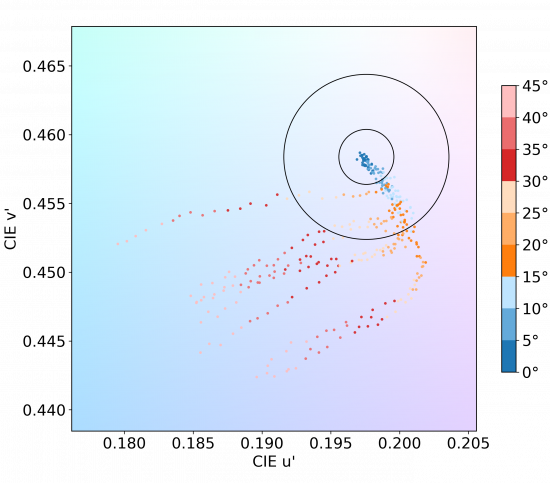
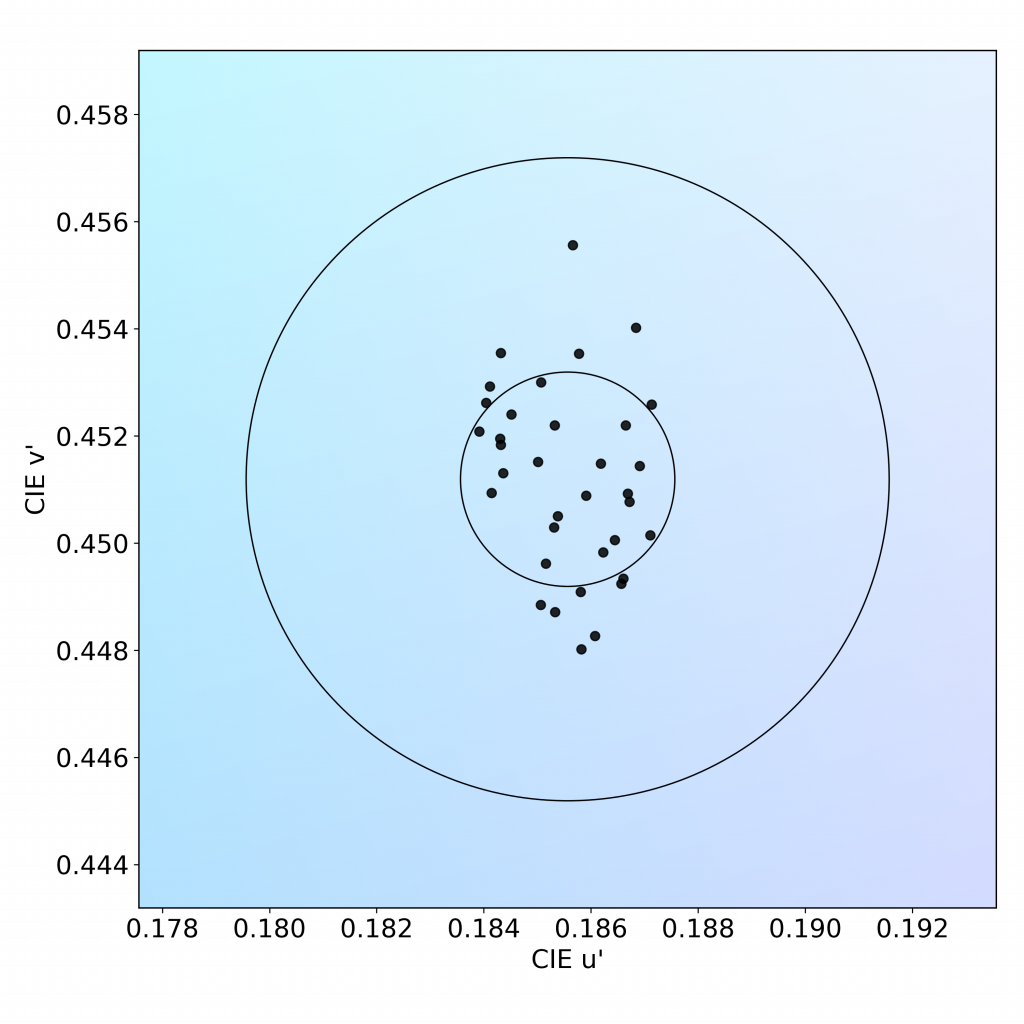
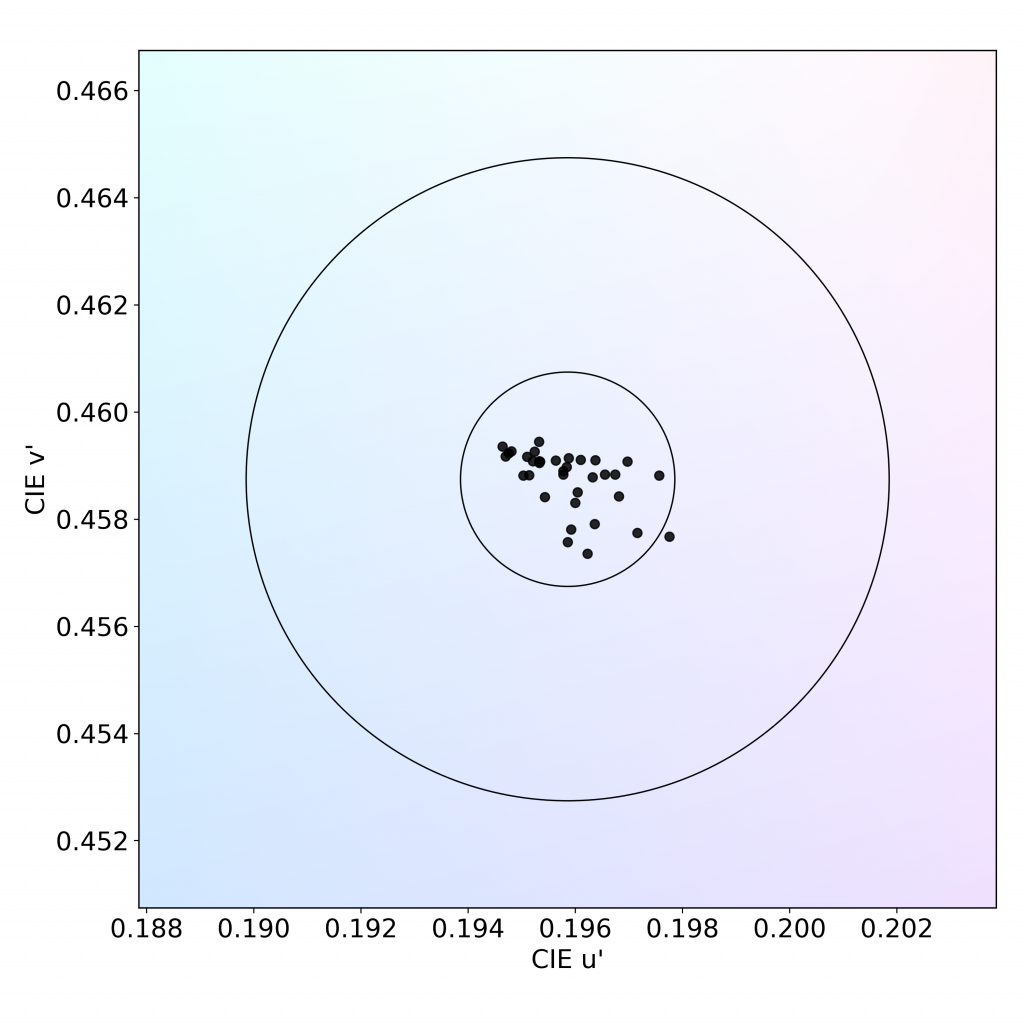
Video
Xiaomi 12 Pro
167
Our video attribute evaluates the Standard Dynamic Range (SDR) and High Dynamic Range (HDR10) video handling of each device in indoor and low-light conditions. We measure tone mapping, color gamut, brightness and contrast of the display. We perform perceptual analysis against our professional reference monitor (Sony BVM-HX310) to ensure that the rendering respects the artistic intent.
The Xiaomi 12 Pro comes in far below the top performers for this attribute, as its auto-brightness is too low for video content. In addition, its brightness rendering differs depending on the video format, as you can see in the photos of the screens below:

Xiaomi 12 Pro rendering of SDR and HDR10 video content
The HDR10 rendering is darker than the SDR rendering, although the scene is exactly the same. This is explained by the fact that the maximum brightness setting for both formats is the same (3 cd/m2), but the tone curve for HDR10 is steeper than for SDR.
The Xiaomi 12 Pro’s dark rendering is especially apparent when compared to the Xiaomi Mi 11 Ultra and the rival comparison devices:

Video brightness, clockwise from top left: Xiaomi 12 Pro, Xiaomi Mi 11 Ultra, Apple iPhone 13 Pro Max, OnePlus 9 Pro
Mid-tones lack contrast and dark details are lost in the 12 Pro’s rendering.

Video contrast, clockwise from top left: Xiaomi 12 Pro, Xiaomi Mi 11 Ultra, Apple iPhone 13 Pro Max, OnePlus 9 Pro
Further, a green cast is noticeable, degrading skin tone rendering.
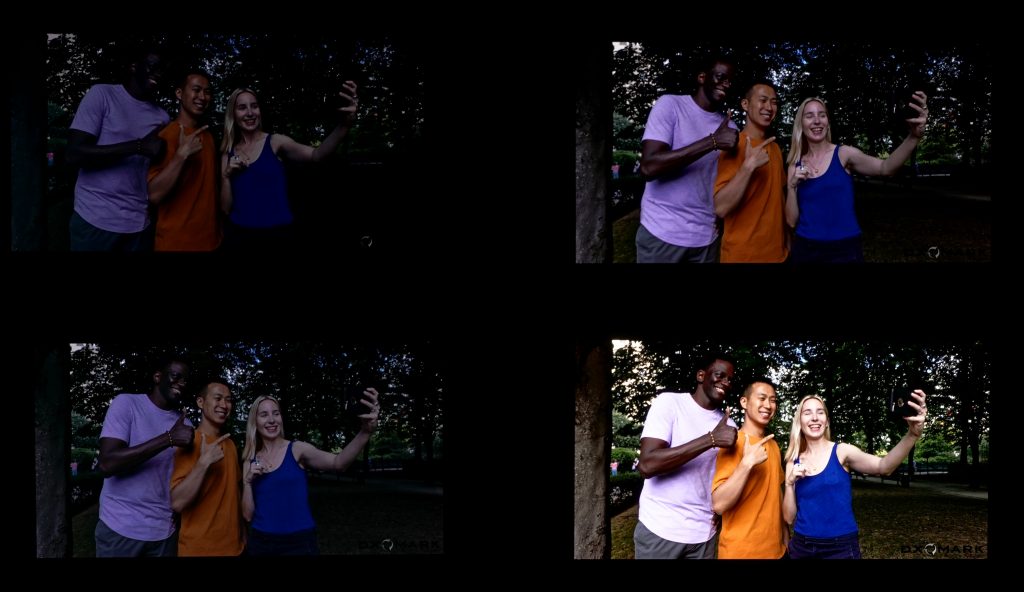
Video skin tone color rendering, clockwise from top left: Xiaomi 12 Pro, Xiaomi Mi 11 Ultra, Apple iPhone 13 Pro Max, OnePlus 9 Pro
Motion
Xiaomi 12 Pro
The motion attribute evaluates the handling of dynamic contents. Frame drops, motion blur, and playback artifacts are scrutinized using games and videos.
The Xiaomi 12 Pro shows a lot of frame mismatches when playing 30 fps and 60 fps content, as seen below, but frame mismatches are rarely visible when playing video games.


The Xiaomi 12 Pro manages motion blur well. There is a long delay before the device resumes video playback after moving forwards or backwards in the timeline.
Touch
Xiaomi 12 Pro
164
To evaluate touch, DXOMARK uses a touch robot and a high-speed camera to play and record a set of scenarios for smoothness, accuracy and response-time evaluation.
The adaptative refresh rate showed no glitch when browsing the web: while scrolling, it peaked at 120Hz, and as soon as there was no interaction with the device, it dropped to 10Hz, as you can see below:
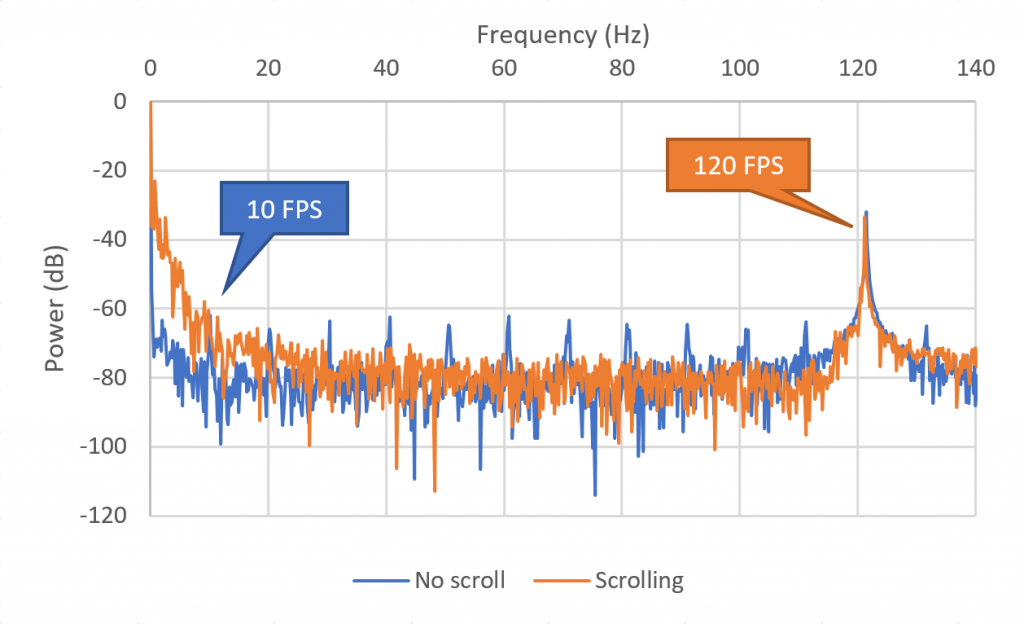
When playing video games, the Xiaomi 12 Pro’s screen reacts accurately, but the bottom can be hard to select. It has a smooth feel when browsing the web, but lacks smoothness in the gallery app and when gaming.
Artifacts
Xiaomi 12 Pro
Evaluating artifacts means checking for the performance, image rendering, and motion flaws that can affect the end-user experience. DXOMARK measures precisely the device’s reflectance and the presence of flicker, as well as assesses any residual aliasing when playing video games, among other artifact indicators.
The Xiaomi 12 Pro manages judder well at 24, 30, and 60 fps, but frame mismatches are frequent.
The device flickers, which may be noticeable to sensitive people.
Finally, the Xiaomi 12 Pro is responsive to ghost touches, and aliasing is visible when playing video games.


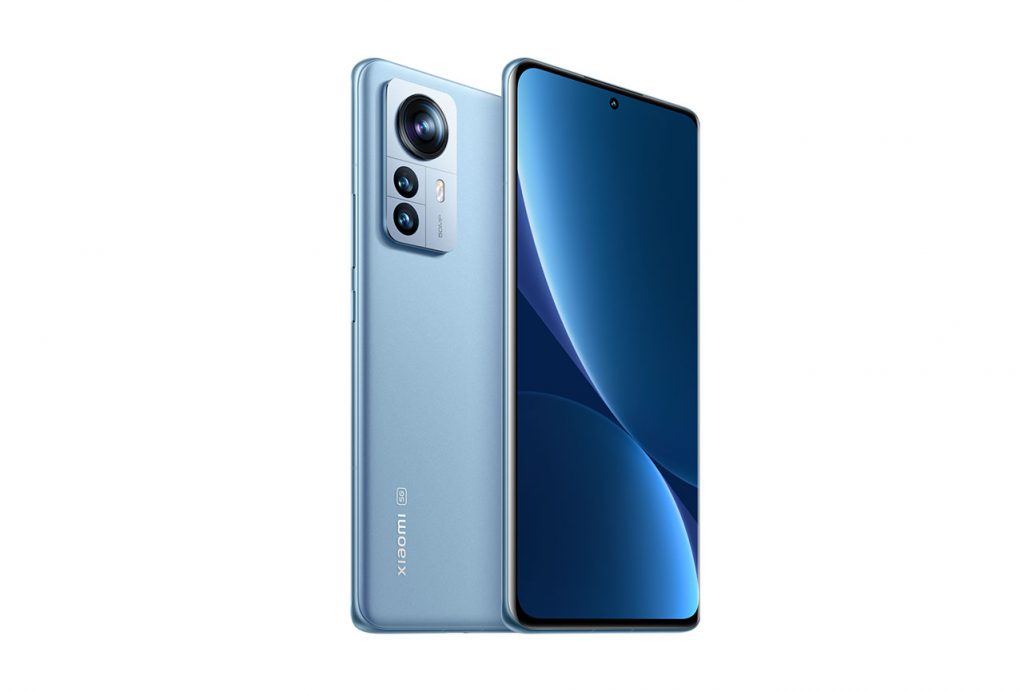



DXOMARK encourages its readers to share comments on the articles. To read or post comments, Disqus cookies are required. Change your Cookies Preferences and read more about our Comment Policy.